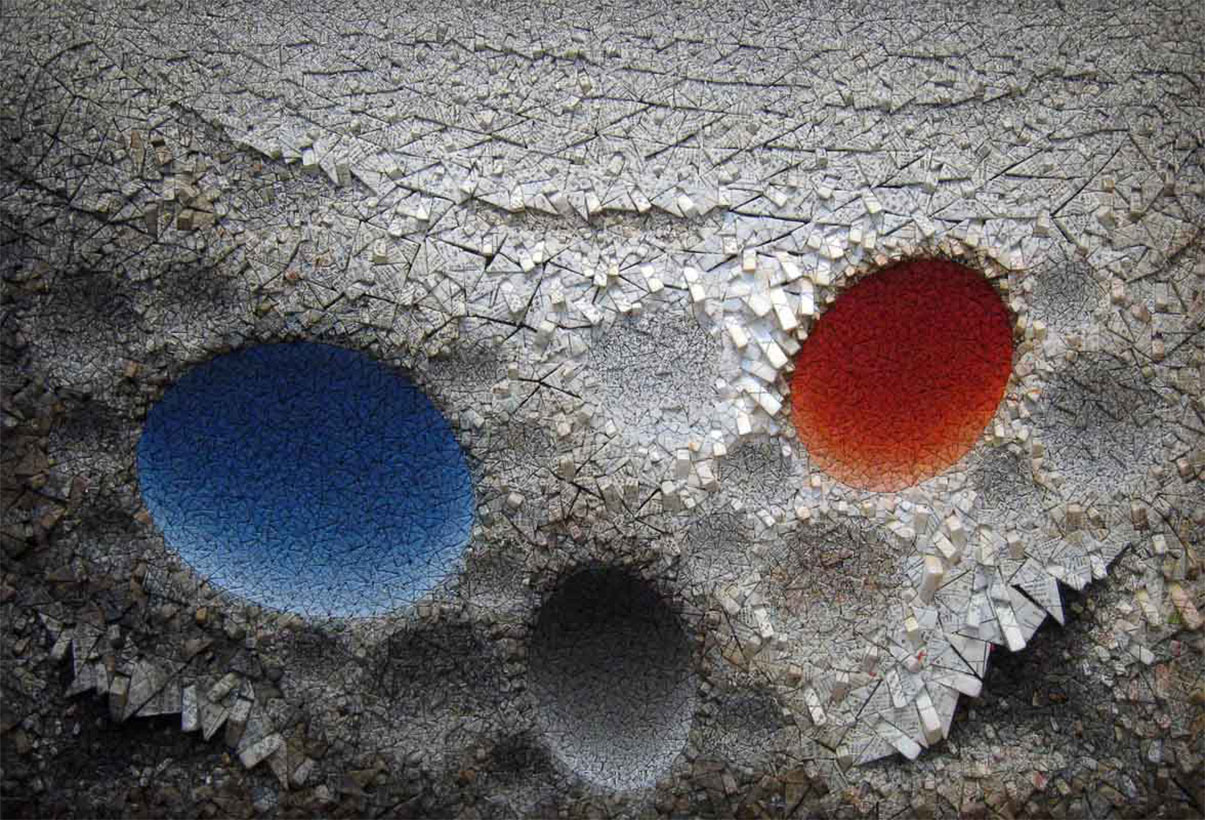
At the age of 69, Chun Kwang Young is today internationally recognized as an artist who has been seeking the essence of his home country, Korea, to infuse it onto the social and political contradictions expressed by the Abstract Expressionist statement.
In his work, Chun Kwang Young creates small paper bundles made of mulberry paper, a reminiscence and strong indicator of Korean history and tradition. Indeed, the very fact of wrapping refers to the nomadic life of Korean ancestors who used to pack objects before each migration. This habit was then re-enacted with children carrying their books in clothes bundles or doctors wrapping their medicine and hanging them from the ceiling. These small triangular entities, hardly visible from the distance, are thus embodying a large panel of various uses of the same technique: they are loaded with Korean past.
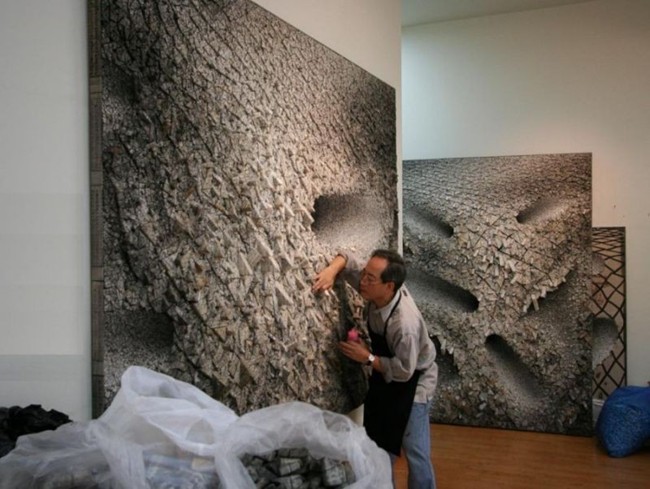
Becoming a symbol, the triangle acquires both semantic and syntactic dimensions. The first one is linked to the meaning of the symbol and to what it refers to; the latter corresponds to the relationship between triangles, their assemblage. Indeed, each triangle welcomes a different written thought extracted from books aged of more than 100 years – novels, diaries, codes of laws, the Analects of Confucius, the Book of Mencius. Past is given another voice thanks to the coexistence and the compilation of a multifaceted history. Books and literature are being offered a new common ground; an experimental field on which they can unfold again in a continuous and plural echo. As La Comedie Humaine in which Balzac intends to embrace society in its whole – building a structure representative of its time – Chun’s animated canvas stirs history through literature intertwining different episodes and opinions. A painting becomes a theatre where books are characters and take the floor. Indeed, variations of tones, colours and sizes of triangles guide us through different voices, some stronger, louder or more meaningful than others. Flat void shapes unified by a single colour may convey the idea of a peaceful and smoothed dialogue, enrolled in the painting as a bubble of harmony in contrast with irregular protuberances erecting in the surroundings.
One can wonder if Chun’s melancholic aesthetics, artisanal techniques and references to the past are not but a pure anachronism. In fact, by magnifying memories and keeping them as they are – untouched old books, mulberry paper wrapped with threads extracted from the books themselves – he invites us to stroll along history as an undiscovered platform of opposing or related elements. Inventing new resonances, he transcends Franck Stella’s minimalist concept of “what you see is what you see”. History remains and the artist keeps honest, faithful and respectful towards it. However, these components can rearrange into another puzzle that addresses universal issues.




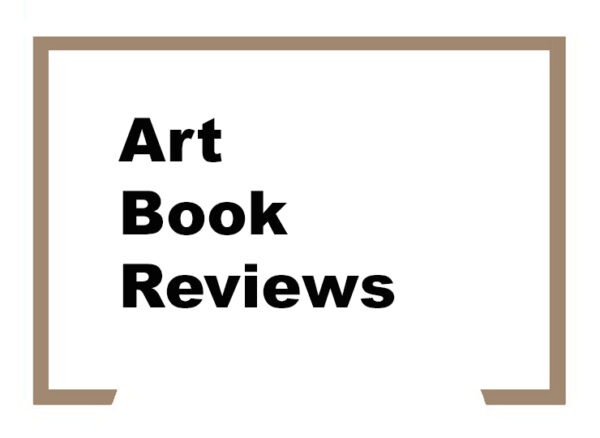
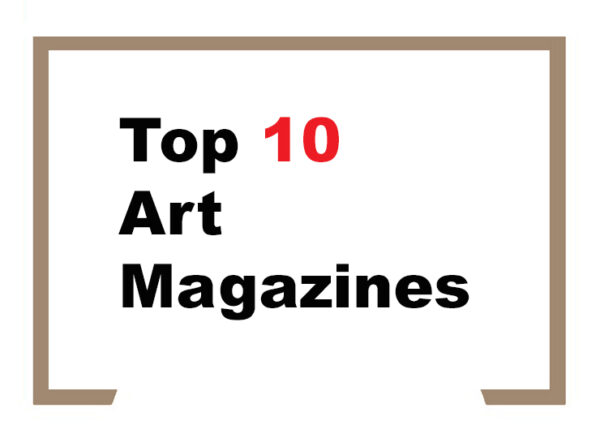
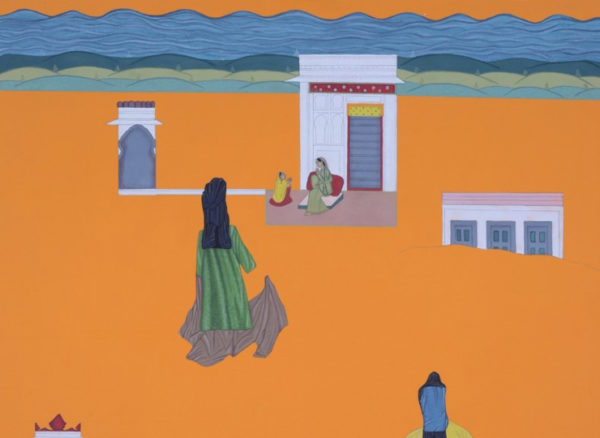
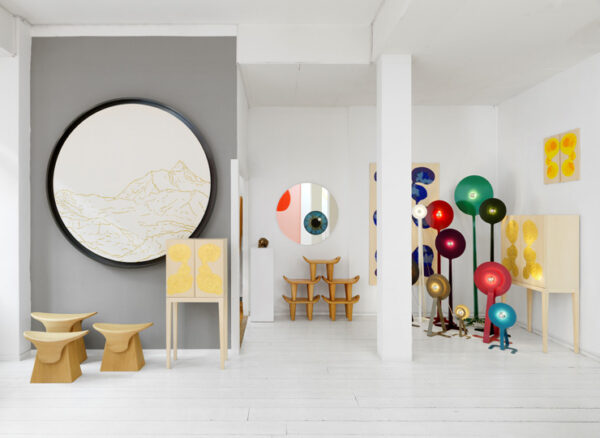
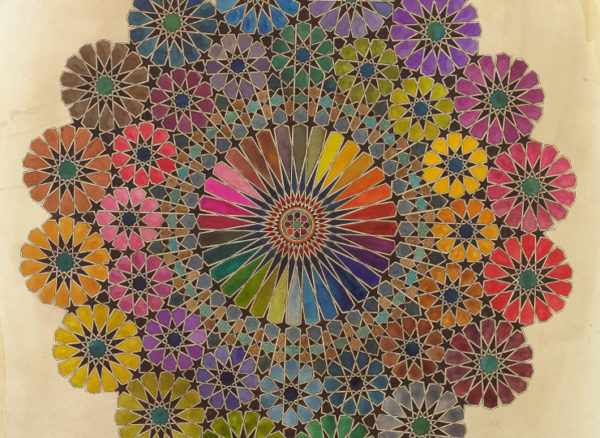

Comments